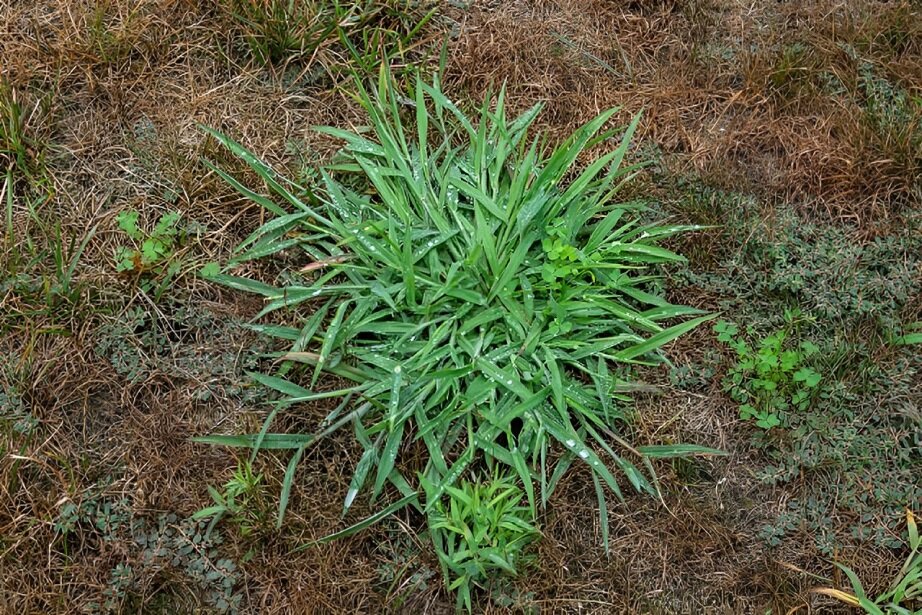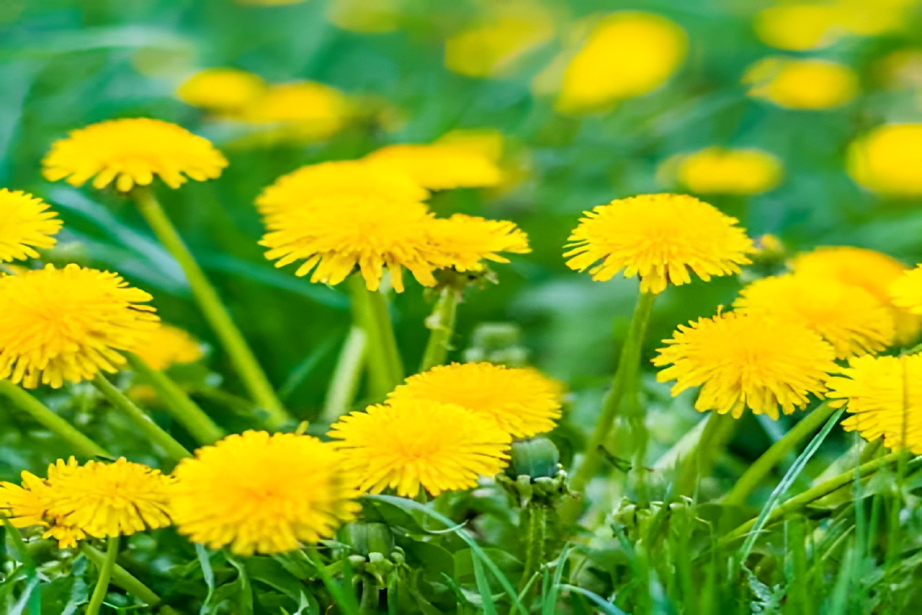Most Popular Use Common North Carolina Weeds
North carolina is home to a wide variety of weeds, both native and invasive, that thrive in its diverse climates. These weeds often appear in gardens, lawns, and fields, and some can even have medicinal or practical uses. Understanding common weeds helps with effective management.
Crabgrass

Crabgrass is a common annual weed that thrives in warm-season lawns and gardens, particularly in North Carolina. It germinates in late spring and early summer, quickly spreading and forming dense mats that outcompete turfgrass.
This weed is easily identifiable by its wide, light green blades and prostrate growth habit. Crabgrass is highly invasive due to its ability to produce a large numbers of seeds that can remain viable in the soil for several years.
Effective management typically involves a combination of pre-emergent herbicides in early spring and maintaining healthy, dense turf to prevent its establishment.
Henbit
- Scientific Name: Lamium amplexicaule.
- Appearance: Henbit has square stems, rounded leaves with deep veins, and small, tubular purple flowers.
- Growth Habit: This winter annual weed typically germinates in the fall and blooms in early spring.
- Habitat: Henbit thrives in disturbed soils, including lawns, square feet garden kale, and agricultural fields.
- Reproduction: It spreads by seed, with each plant capable of producing numerous seeds that can remain viable for several years.
- Control Methods: Effective management includes maintaining a healthy lawn, mulching garden areas, and using post-emergent herbicides if necessary.
- Ecological Impact: While considered a weed, henbit is an early nectar source for bees and other pollinators in spring.
North Carolina, grassy weeds like crabgrass, quackgrass, and nutsedge often resemble lawn grass. These weeds can be challenging to identify due to their similar appearance to turfgrass.
North Carolina, purple weeds like henbit and purple deadnettle are common. These weeds typically bloom in early spring and can be identified by their distinctive purple flowers.
Yes, many weeds are monocots, including grasses like crabgrass and sedges like nutsedge. Monocots have a single seed leaf and often feature parallel-veined leaves.
Yes, many weeds are dicots, such as dandelions, chickweed, and clover. Dicots typically have two seed leaves and feature a branching vein pattern in their leaves.
Purple Deadnettle

Purple deadnettle (Lamium purpureum) is a common winter annual weed found in North Carolina, recognizable by its distinctive purple-tinged leaves and small, pinkish-purple flowers.
This weed typically germinates in the fall, grows during mild winter periods, and blooms in early spring. It thrives in disturbed outdoor soil, often appearing in lawns, gardens, and agricultural fields.
Purple deadnettle is closely related to henbit and shares a similar growth habit, with square stems and heart-shaped leaves. While often considered a nuisance due to its rapid spread and competition with desired plants.
It also serves as an early spring nectar source for pollinators. Effective control includes maintaining healthy turf, mulching, and using appropriate herbicides when necessary.
Dandelion

- Scientific Name: Taraxacum officinale.
- Appearance: Dandelions have bright yellow flowers that turn into fluffy seed heads. They feature deeply toothed leaves.
- Growth Habit: This perennial weed has a deep taproot and can thrive in a variety of conditions, often found in lawns, gardens, and roadsides.
- Reproduction: Dandelions reproduce both by seeds, which are dispersed by the wind, and by regrowth from their persistent taproots.
Conclusion
North Carolina, common weeds such as crabgrass, henbit, purple deadnettle, and dandelion are frequently found in lawns, gardens, and agricultural areas. Crabgrass, an aggressive annual, can quickly take over turfgrass.
Henbit and purple deadnettle, with their distinctive purple flowers, often appear in early spring, thriving in disturbed soils. Dandelions, recognizable by their bright yellow flowers and fluffy seed heads, are hardy perennials that can spread rapidly.
These weeds not only compete with desired plants for nutrients and space but also add a colorful, albeit unwanted, presence to the landscape.
